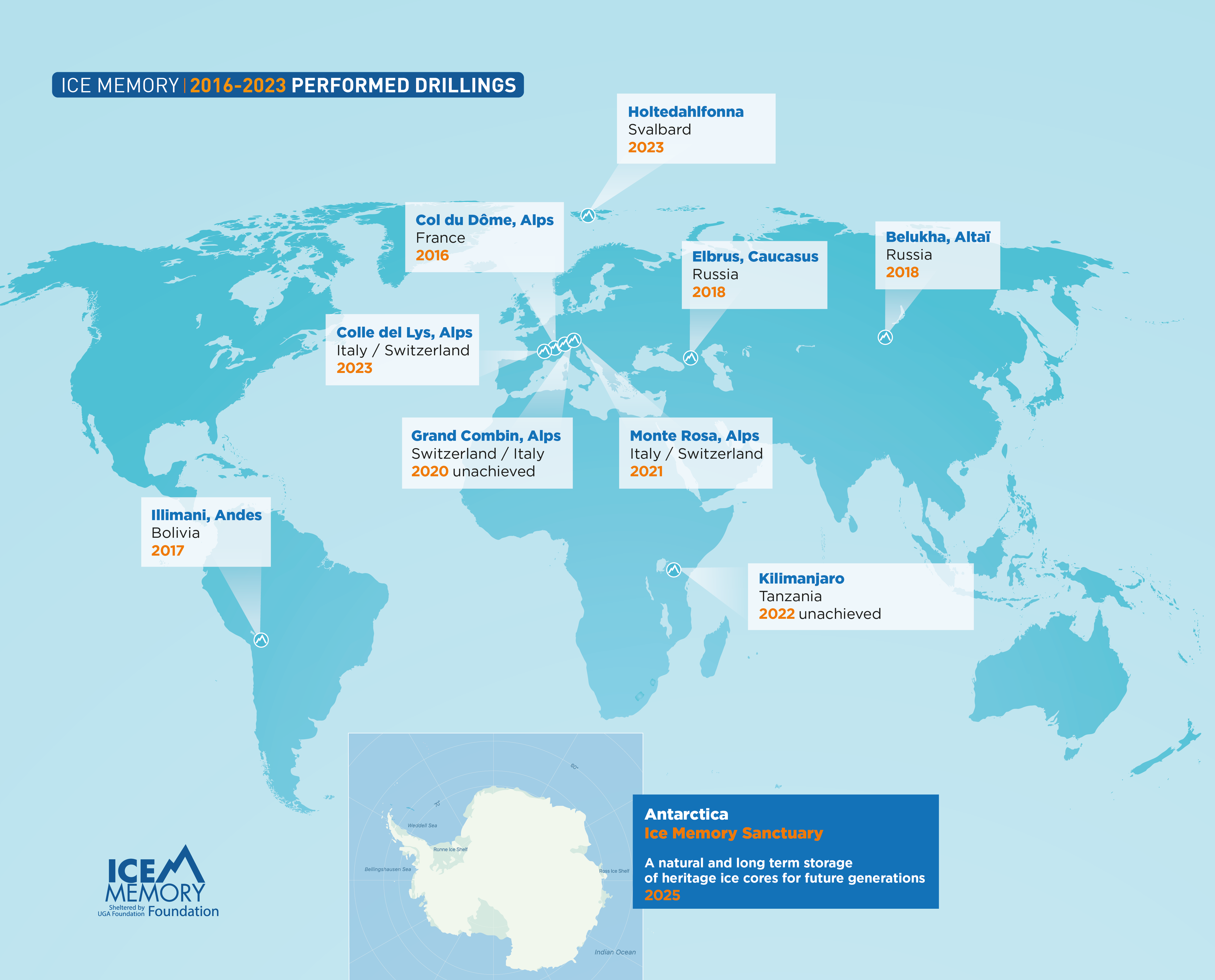Collecting Ice Cores
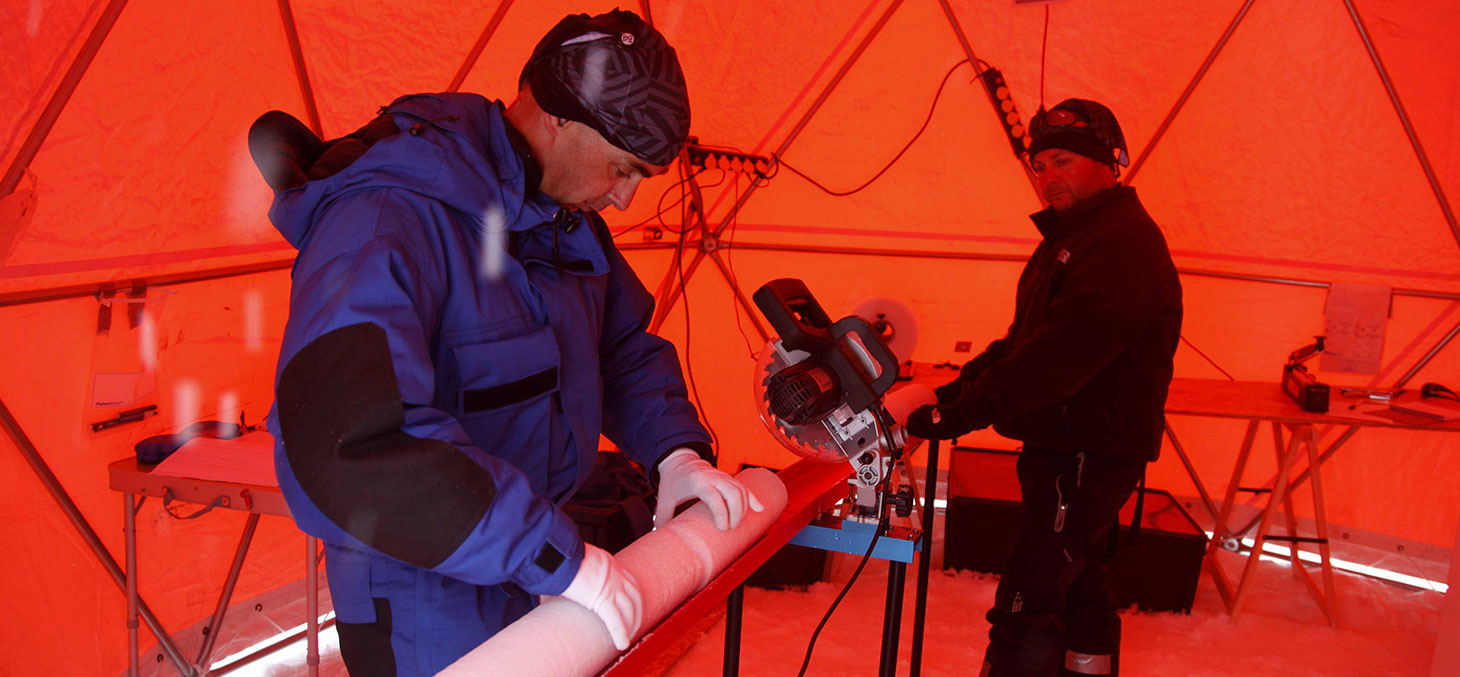
A race against time to conserve high-quality data
Sampling 20 glaciers in 20 years: the choice of the sites
The Ice Memory Foundation has brought the international community of glaciologists together in the effort to complete at least 20 drillings operations in 20 years from the planet’s glaciers. These glaciers should:- demonstrate an urgency of preservation while ensuring high-quality records,
- provide significant and recognised scientific results on the atmospheric composition, environmental parameters, and climate of the past, as well as ensure optimal geographical and temporal coverage for the region. Other sites elsewhere in the world will be investigated in the coming future.
Achieved drillings
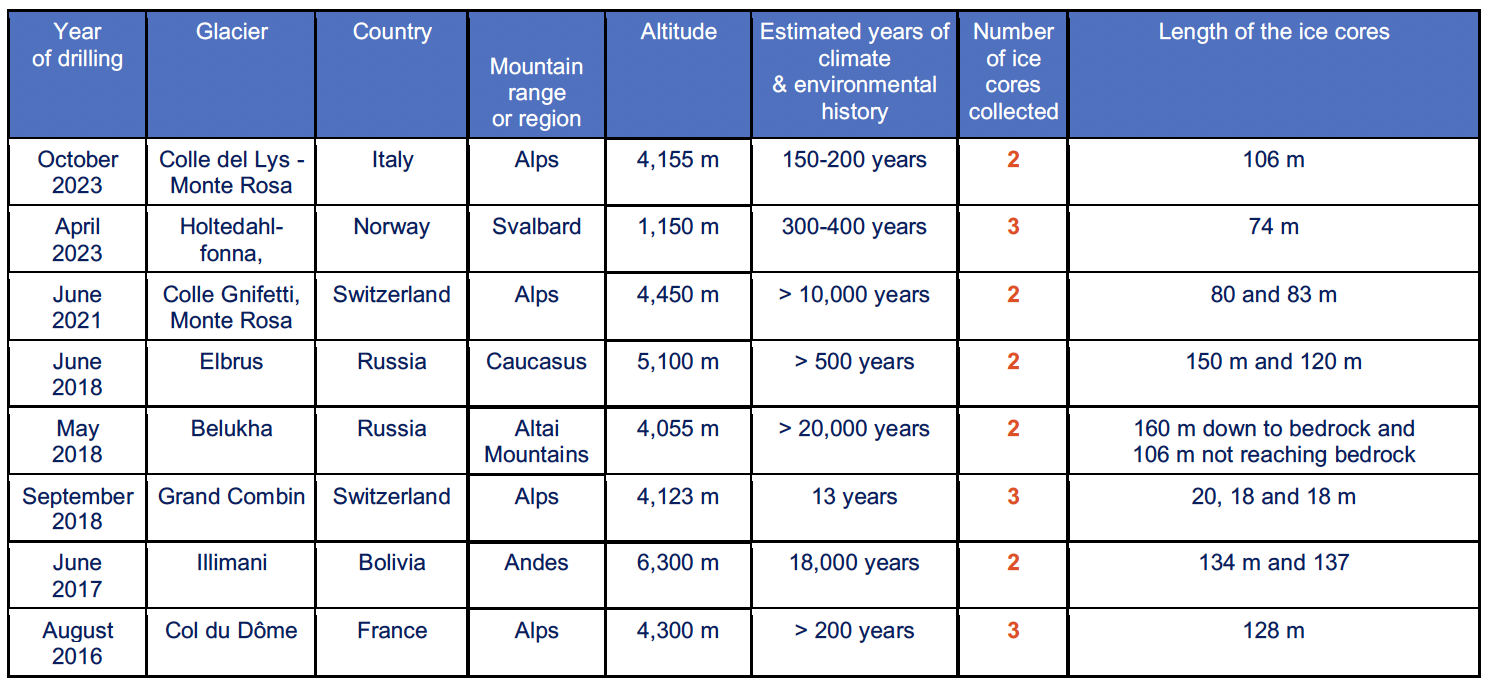
Already targeted drillings
- Canada, USA
Saint Elias Mountains
Eclipse Icefield
- Peru, Argentina
Andes plateau
- Australia
Heard Island
- Tajikistan, Pakistan, China
Pamir, Kunlun, Qilian,
East Rongbuk on the slope of Mount Everest, Guliya from the Qinghai mountains
Himalayas Mountains
A number of additional sites are currently being investigated.
The ice cores drilling technique
In order to sample ice formed by the compression of successive layers of snow year after year, drilling operations make a vertical cut using a core drill, a steel tube attached to a power cable shaped like a screw and equipped with cutting blades. The steel tube, which is approximately 1.50 cm long, is driven into the ice by its rotational functionality.
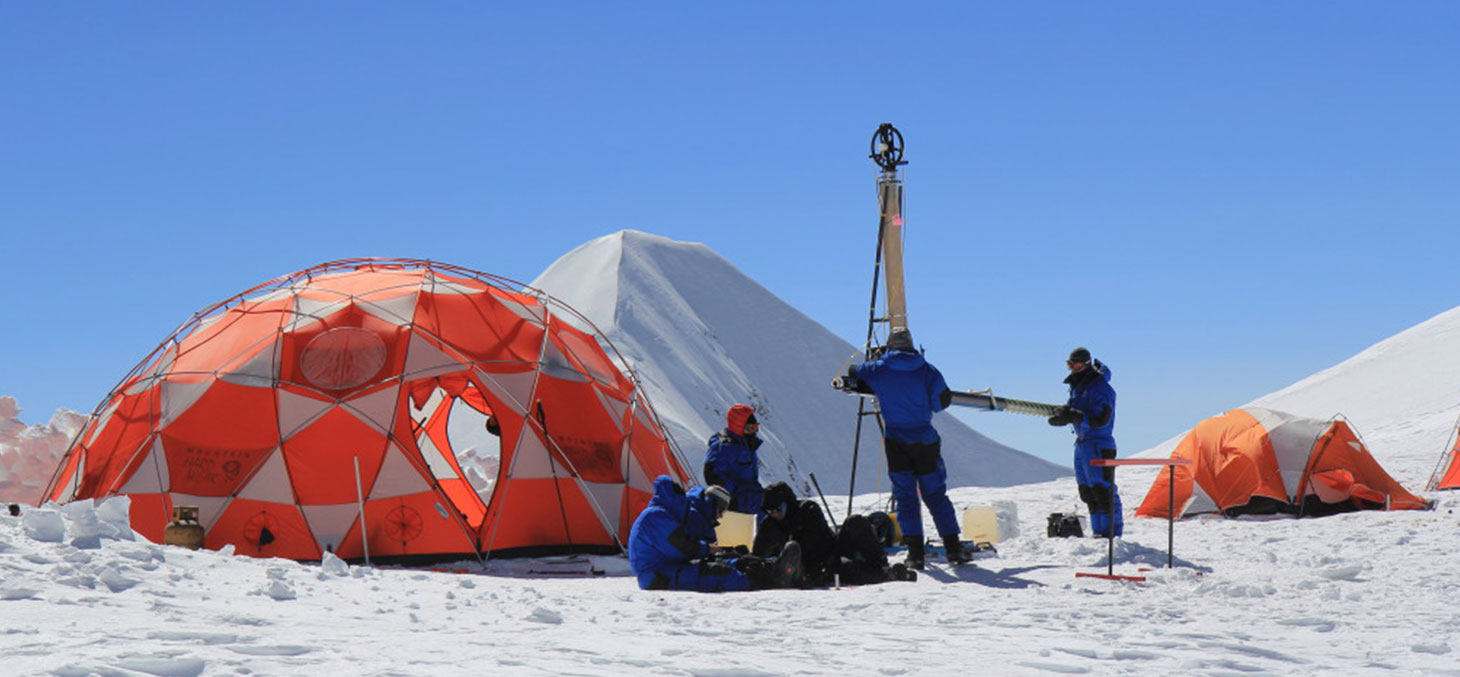
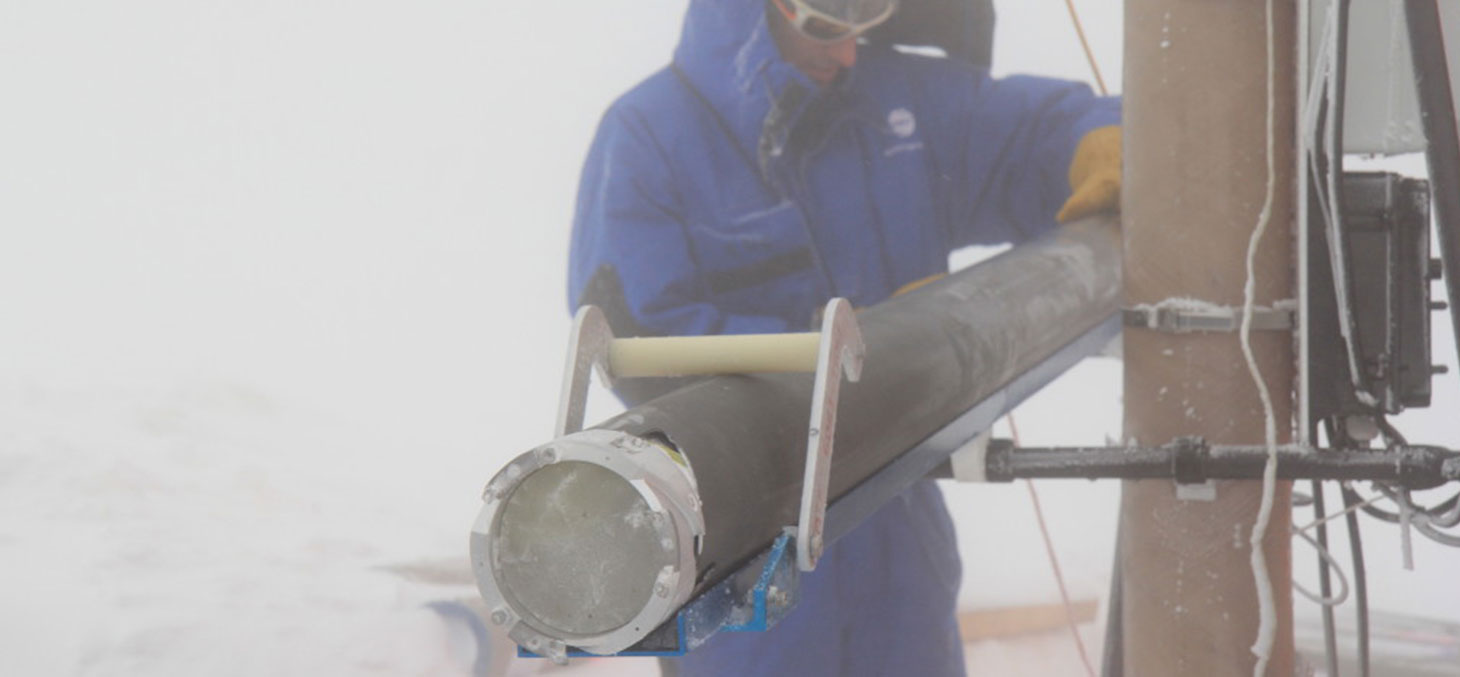
Once it is completely driven in – and thus filled with ice – glaciologists extract the tube, which now contains an ice cylinder known as an ice core. . The segment core varies from 50 cm to 100 cm in length and 10 cm in diameter, depending on the driller used for the operation. They then repeat the process in the borehole. Each core is placed in a protective cover that is numbered and marked with its location and depth of extraction, as well as its top and bottom end.
They are then carefully stored in isothermal storage boxes while awaiting transport in a refrigerated container. The cold chain that must be maintained from the drilling site to storage is particularly sensitive, and represents a crucial element in such an ice core drilling operation.
For more than fifty years, scientists have taken core samples for their own research.
They are then carefully stored in isothermal storage boxes while awaiting transport in a refrigerated container. The cold chain that must be maintained from the drilling site to storage is particularly sensitive, and represents a crucial element in such an ice core drilling operation.
For more than fifty years, scientists have taken core samples for their own research.
Ice Memory Foundation drillings
- 2023. Monte Rosa - Colle del Lys / Italy
- 2023. Svalbard Holtedahlfonna / Norway
- 2022. Kilimanjaro / Tanzania
- 2021. Monte Rosa - Colle Gnifetti / Italy
- 2020. Grand Combin (Corbassier) / Switzerland
- 2018. Elbrus, Caucasus / Russia
- 2018. Belukha / Russia
- 2017. Illimani / Bolivia
- 2016. Col du Dôme / France
Published on March 17, 2023
Updated on September 5, 2024
Updated on September 5, 2024

